
Gothic Style
What is the Gothic Style?
Some of the most famous examples of Gothic architecture are the cathedrals of Notre-Dame in Paris, Chartres in France, Cologne in Germany, and Westminster Abbey in London.
Gothic art also includes sculpture, painting, illuminated manuscripts, and metalwork, often depicting religious scenes, saints, and figures.
Gothic fashion is a modern subculture that draws inspiration from the Gothic aesthetic, featuring dark clothing, makeup, and accessories.
Example of the color palette for the image of Gothic Style

See these colors in NCS, PANTONE, RAL palettes...
Why do the Gothic Style clothes look good?
Here are some possible explanations:
Gothic style clothes often feature dark, mysterious, and antiquated elements, such as black lace, velvet, corsets, leather, chains, and studs.
Such clothes can also reflect a romantic and elegant aesthetic, inspired by historical periods such as the Victorian era, the Renaissance, or the Middle Ages.
Some examples are long dresses, ruffled collars, brocade fabrics, and intricate embroidery.This clothes can also incorporate elements from other subcultures, such as punk, emo, cybergoth, or nu goth.
It can also be comfortable and practical, depending on the occasion and the weather.
Some gothic garments are made of breathable and stretchy materials, such as cotton, jersey, or mesh.
Others are designed to keep one warm and cozy, such as coats, hoodies, or boots.Gothic style clothes can be fun and playful, depending on one's mood and personality.
Some gothic outfits can feature cute and quirky accessories, such as plush toys, pins, patches, or stickers.
Others can include humorous and ironic slogans, images, or references.
Example of the color palette for the image of Gothic Style

See these colors in NCS, PANTONE, RAL palettes...
Who can wear the Gothic Style garments?
Example of the color palette for the image of Gothic Style

See these colors in NCS, PANTONE, RAL palettes...
What are the 4 main features of Gothic style?
Here are the four main features that define the Gothic style:
Pointed Arches: The pointed arch is one of the most significant elements in Gothic architecture.
Unlike the semicircular arches of Romanesque buildings, the pointed arches of Gothic structures are taller and have a more vertical emphasis, which not only contributes to the aesthetic of height but also distributes the weight of the roof and walls more efficiently.Ribbed Vaulting: Rib vaults are intersecting arches that form a web-like pattern on the ceiling.
This feature allows for the support of heavier ceilings and the creation of a more complex and decorative interior space.Flying Buttresses: These are external supports that transfer the lateral forces from the walls and roof to the ground.
Flying buttresses are a hallmark of Gothic architecture, allowing for thinner walls and larger windows.Expansive Stained Glass Windows: The use of large stained glass windows is another defining feature of Gothic architecture.
These windows are often intricately designed and filled with vibrant colors, illuminating the interiors with natural light and creating a heavenly atmosphere.
These features come together to create a style that is not only structurally innovative but also rich in symbolism and beauty, reflecting the aspirations and religious devotion of the era.
Gothic architecture continues to inspire awe with its soaring spires, intricate details, and the play of light through its magnificent windows.
Example of the color palette for the image of Gothic Style
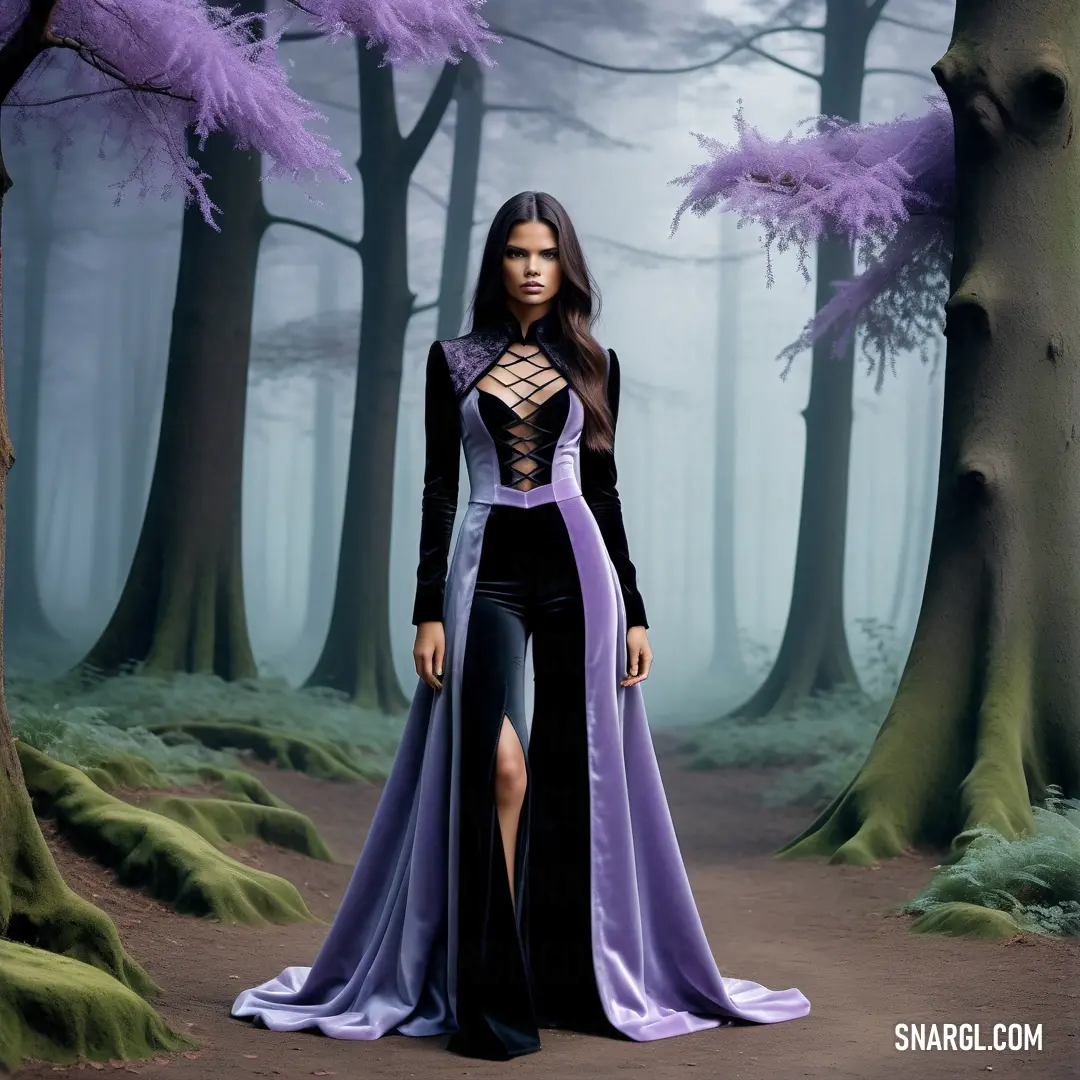
See these colors in NCS, PANTONE, RAL palettes...
Can you be goth and not dress goth?
Goth is a subculture that originated in the UK in the early 1980s, influenced by gothic rock, post-punk, horror films, and literature.
It is often associated with a distinctive style of clothing, makeup, and hair, usually featuring black, leather, lace, fishnets, and spikes.
However, being goth is not just about how you look, but also about how you think and feel.
Goth is a way of expressing your individuality, creativity, and passion for the dark and mysterious aspects of life.
It is also a community of people who share similar interests, tastes, and values.
Therefore, you can be goth and not dress goth, as long as you identify with the goth culture and music.
Dressing goth is not a requirement, but a choice.
Some people may dress goth occasionally, or only in certain settings, such as clubs, concerts, or festivals.
Others may dress goth all the time, or not at all.
There is no right or wrong way to be goth, as long as you are true to yourself and respectful of others.
In conclusion, goth is more than a fashion style, it is a subculture that encompasses music, art, literature, and philosophy.
You can be goth and not dress goth, as long as you appreciate and participate in the goth culture and community.
Goth is about being yourself, not following a stereotype.
Example of the color palette for the image of Gothic Style

See these colors in NCS, PANTONE, RAL palettes...
Who usually wears Gothic Style clothing?
Gothic style clothing is typically worn by individuals who identify with or are influenced by the goth subculture.
People who wear gothic fashion often do so to express their personal style and to make a statement that aligns with the themes of the subculture, which include an appreciation for the darker aspects of beauty, art, and music.
Gothic fashion can include a range of garments such as black velvets, lace, fishnets, and leather, often accessorized with tightly laced corsets, gloves, stilettos, and silver jewelry featuring religious or occult themes.
Influential figures in the goth scene, such as Siouxsie Sioux and Robert Smith, have had a significant impact on the evolution of gothic fashion.
Overall, gothic style clothing is more than just a fashion choice; it's a form of self-expression that resonates with the individual's identity and cultural preferences within the goth subculture.
It's a way to stand out and embrace an alternative perspective on beauty and fashion.
Example of the color palette for the image of Gothic Style
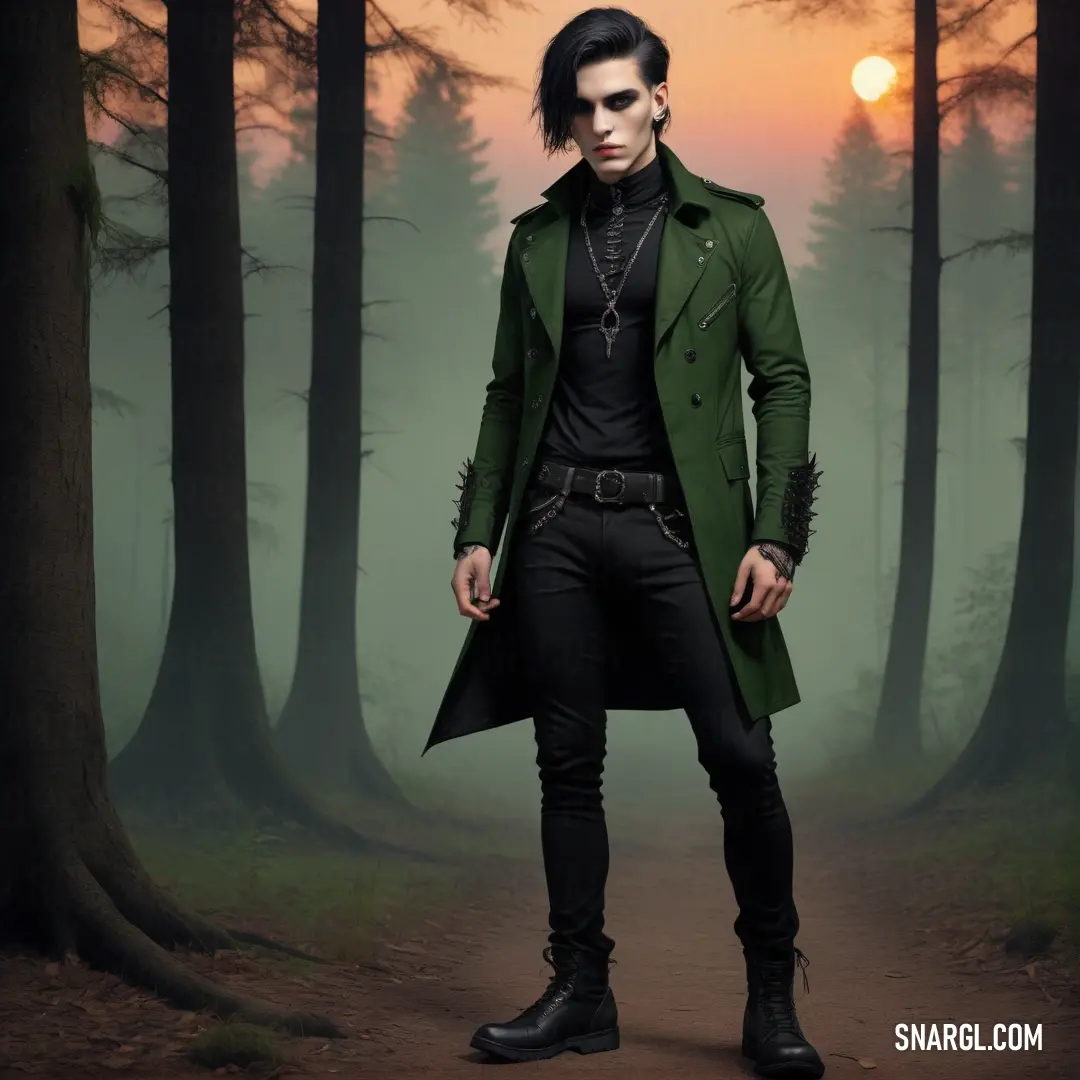
See these colors in NCS, PANTONE, RAL palettes...
What are some of the most iconic Gothic Style outlooks?
The pointed arch, which is the defining element of Gothic architecture.
It allows for higher and wider vaults, and creates a sense of verticality and lightness.
The pointed arch can be seen in many Gothic buildings, such as the Notre-Dame Cathedral in Paris or the Westminster Abbey in London.The flying buttress, which is a structural element that supports the walls and vaults of Gothic buildings from the outside.
It transfers the weight of the roof to the ground, and enables the walls to have large openings for windows.
The flying buttress can be admired in many Gothic cathedrals, such as the Chartres Cathedral in France or the Cologne Cathedral in Germany.The stained glass window, which is a decorative element that fills the walls of Gothic buildings with colorful light.
It often depicts religious scenes or stories, and creates a mystical atmosphere inside the building.
The stained glass window can be found in many Gothic churches, such as the Sainte-Chapelle in Paris or the York Minster in England.The tracery, which is a pattern of stone or wood that divides the windows or walls of Gothic buildings into segments.
It adds complexity and elegance to the design, and often forms geometric or floral shapes.
The tracery can be seen in many Gothic structures, such as the Salisbury Cathedral in England or the Milan Cathedral in Italy.The ribbed vault, which is a type of ceiling that consists of intersecting arches that form ribs.
It creates a dynamic and spacious impression, and allows for more height and light.
The ribbed vault can be observed in many Gothic edifices, such as the Reims Cathedral in France or the Burgos Cathedral in Spain.
Example of the color palette for the image of Gothic Style

See these colors in NCS, PANTONE, RAL palettes...
How to incorporate other influences or trends into the Gothic Style?
Here are some possible ways to incorporate other elements into the Gothic style:
You can add some color to your dark outfit by choosing accessories or clothing items that have bright or pastel hues, such as pink, purple, blue, or green.
This can create a contrast and a playful vibe, while still maintaining the Gothic aesthetic.
You can also experiment with different patterns, such as floral, plaid, or polka dots, to add some variety and texture to your outfit.You can combine Gothic style with elements of historical or cultural fashion, such as Victorian, Medieval, Renaissance, or Asian.
For example, you can wear a corset, a lace dress, a ruffled blouse, or a long coat that evoke the elegance and romance of the past.
You can also wear a kimono, a cheongsam, a sari, or a turban that reflect the diversity and richness of different cultures.
These items can add some sophistication and flair to your Gothic look.You can mix Gothic style with elements of modern or futuristic fashion, such as punk, cyberpunk, steampunk, or industrial.
For example, you can wear leather jackets, metal studs, chains, spikes, or safety pins that express your rebellious and edgy attitude.
You can also wear goggles, gloves, boots, or hats that have mechanical or technological features, such as gears, wires, lights, or buttons.
These items can add some innovation and excitement to your Gothic look.
The key is to be creative and express yourself through your fashion choices.
You can experiment with different combinations and find what suits your personality and mood best.
Gothic style is not limited by rules or conventions; it is a way of exploring and celebrating your individuality.
Example of the color palette for the image of Gothic Style

See these colors in NCS, PANTONE, RAL palettes...
What are the essential Gothic Style clothing items and accessories?
Some of the essential gothic clothing items and accessories are:
Black clothing: Black is the dominant color in gothic fashion, as it symbolizes darkness, mystery, and elegance.
Black clothing can range from simple t-shirts and jeans to elaborate dresses and coats.
Some popular brands that offer black clothing for goths are Aderlass, Queen of Darkness, and Killstar.Lace, velvet, and leather: These fabrics add texture, contrast, and sophistication to gothic outfits.
Lace is often used for dresses, tops, and skirts, while velvet and leather are common for jackets, pants, and boots.
Some examples of lace, velvet, and leather clothing are this maxi tulle dress, this gothic asymmetrical hem velvet dress, and this gothic men black coat.Boots: Boots are a staple of gothic footwear, as they provide comfort, durability, and style.
Boots can be flat or heeled, plain or decorated, ankle or knee-high.
Some popular types of boots for goths are combat boots, platform boots, and steampunk boots.Jewelry and accessories: Jewelry and accessories are used to enhance and personalize gothic outfits.
They can include necklaces, earrings, rings, bracelets, belts, buckles, chains, pins, patches, hats, gloves, scarves, masks, etc.
Some common motifs for gothic jewelry and accessories are skulls, crosses, pentagrams, bats, spiders, roses, etc.
Examples of gothic jewelry and accessories include the baphomet headband, this sacred moth tee, and this steampunk feather shrug.
Example of the color palette for the image of Gothic Style

See these colors in NCS, PANTONE, RAL palettes...
How to keep the Gothic Style updated and fresh?
The Gothic style is more than just a trend
It's a way of life, a way to transcend
The mundane and the ordinary, the dull and the bland
The Gothic style is a statement, a way to demand
Attention and respect, admiration and awe
The Gothic style is a challenge, a way to explore
The dark and the mysterious, the sublime and the raw
The Gothic style is an art, a way to adore
But how to keep it updated and fresh?
How to avoid the clichés and the mesh?
How to make it your own and express your soul?
How to keep it alive and not let it grow old?
Here are some tips that might help you out
Some ways to keep the Gothic style in doubt
Some ways to make it new and unique
Some ways to make it chic and sleek
Experiment with colors and patterns, don't stick to black
Try reds and purples, greens and blues, even white or pink
Mix and match different fabrics and textures, don't be afraid to stack
Try lace and leather, velvet and silk, even metal or fur
Accessorize with jewelry and makeup, don't be shy
Try rings and necklaces, earrings and bracelets, even piercings or tattoos
Mix and match different styles and themes, don't be too sly
Try skulls and roses, crosses and pentagrams, even angels or demons
Customize your clothes and furniture, don't be boring
Try cutting and sewing, painting and gluing, even burning or ripping
Mix and match different elements and motifs, don't be conforming
Try spikes and studs, chains and buckles, even feathers or beads
Express your personality and mood, don't be fake
Try writing and drawing, singing and dancing, even acting or playing
Mix and match different genres and media, don't be afraid to make mistakes
Try poetry and novels, music and movies, even games or comics
The Gothic style is not a rulebook, it's a guidebook
It's not a prison, it's a playground
It's not a limit, it's a challenge
It's not a dead end, it's a journey
So keep it updated and fresh
Example of the color palette for the image of Gothic Style

See these colors in NCS, PANTONE, RAL palettes...
What are the common mistakes or faux pas to avoid when dressing Gothic Style?
Here are some tips to help you avoid them:
Don't confuse goth with emo, punk, or metal.
These are different subcultures with different aesthetics, music, and values.
Goth is more about dark romance, mystery, and horror, while emo is more about emotional expression, punk is more about rebellion, and metal is more about aggression.Don't wear goth clothing that is inappropriate for the occasion.
For example, don't wear a corset, a long velvet dress, or a spiked collar to a formal event, a job interview, or a family gathering.
You might offend or shock some people, or look out of place.
Instead, opt for more subtle goth elements, such as black accessories, dark makeup, or a simple black dress.Don't wear goth clothing that is uncomfortable or impractical.
For example, don't wear shoes that are too high, tight, or heavy, or clothes that are too hot, cold, or restrictive.
You might end up hurting yourself, or feeling miserable.
Instead, choose goth clothing that fits well, suits the weather, and allows you to move freely.Don't wear goth clothing that is cheap or poorly made.
For example, don't wear clothes that are faded, torn, stained, or falling apart.
You might look sloppy, or like you don't care about your appearance.
Instead, invest in quality goth clothing that is durable, well-designed, and well-maintained.Don't wear goth clothing that is not authentic to your personality.
For example, don't wear clothes that are too dark, too violent, too sexualized, or too stereotypical if they don't reflect who you are or what you like.
You might look fake, or like you are trying too hard.
Instead, find your own goth style that suits your tastes, preferences, and interests.
Remember that goth fashion is all about expressing yourself in a unique and creative way, so have fun with it and be yourself!
Example of the color palette for the image of Gothic Style

See these colors in NCS, PANTONE, RAL palettes...
How has the Gothic Style changed or evolved over time?
It is characterized by features such as pointed arches, ribbed vaults, flying buttresses, stained glass windows, and elaborate ornamentation.
This style was influenced by various factors, such as the rise of the medieval Christian church, the cultural exchange with Islamic Spain, the development of engineering and masonry skills, and the political and economic stability of the period.
Gothic style evolved over time, as different regions and periods adapted it to their own preferences and needs.
Some of the main variations of Gothic style are:
Early Gothic: This is the first phase of Gothic style, which began in France in the 12th century.
It is marked by the use of pointed arches and ribbed vaults, which allowed for higher and lighter structures.
The most famous example of Early Gothic architecture is the Notre Dame Cathedral in Paris.High Gothic: This is the peak of Gothic style, which flourished in France and England in the 13th century.
It is characterized by the refinement of the structural and aesthetic elements of Gothic architecture, such as the increased height and slenderness of the columns, the complexity of the tracery and the stained glass, and the introduction of the flying buttress, which supported the walls and the roof from the outside.
The most famous examples of High Gothic architecture are the Chartres Cathedral and the Sainte-Chapelle in France, and the Westminster Abbey and the Salisbury Cathedral in England.Late Gothic: This is the final phase of Gothic style, which spread across Europe in the 14th and 15th centuries.
It is distinguished by the elaboration and exaggeration of the Gothic features, such as the multiplication of the pinnacles, the flamboyance of the tracery, the richness of the sculpture, and the diversity of the vault forms.
The most famous examples of Late Gothic architecture are the Milan Cathedral in Italy, the Prague Cathedral in the Czech Republic, and the King's College Chapel in England.
Gothic art was often religious and symbolic, depicting scenes from the Bible, the lives of the saints, and the visions of the mystics.
Gothic literature was marked by themes of horror, romance, and fantasy, such as in the works of Dante, Chaucer, and Boccaccio.
Gothic music was based on the polyphonic vocal style of the Gregorian chant, which developed into the motet, the mass, and the madrigal.
Gothic style declined in the 16th century, as the Renaissance and the Reformation brought new cultural and artistic movements.
However, this style was revived in the 18th and 19th centuries, as part of the Romantic and Gothic Revival movements, which appreciated the medieval heritage and the Gothic aesthetics.
Gothic style also inspired the modern goth subculture, which emerged in the late 20th century and is characterized by a dark and mysterious fashion, music, and lifestyle.
Example of the color palette for the image of Gothic Style

See these colors in NCS, PANTONE, RAL palettes...
What are the best tips and tricks for mastering Gothic Style?
Some of the best tips and tricks for mastering Gothic style are:
Choose a subculture that suits your personality and preferences.
There are many types of Gothic styles, such as traditional, pastel, emo, romantic, and Victorian.
Each one has its own aesthetic, colors, fabrics, and accessories.
You can research online, look for inspiration from celebrities, or experiment with different combinations to find your ideal Gothic style.Invest in some staple pieces that can be mixed and matched with different outfits.
Some of the essential items for Gothic style are black skinny jeans, leather jackets, boots, belts, chokers, fishnets, corsets, and pentagrams.Experiment with dark makeup and hair.
Gothic style is not complete without some dramatic makeup and hair.
Try different shades of black, grey, purple, red, or green for your eyes, lips, and nails.
You can also add some eyeliner, mascara, and false lashes to enhance your features.
For your hair, you can dye it black, bleach it, or add some colorful streaks.
You can also style it in different ways, such as braids, buns, curls, or spikes.Accessorize with jewelry, piercings, tattoos, and hats.
Gothic style is all about expressing yourself and adding some flair to your outfits.
Accessorize with various jewelry, such as rings, earrings, necklaces, and bracelets.
You can also add some piercings, tattoos, or hats to make a statement.
Some of the popular symbols and motifs for Gothic style are skulls, crosses, bats, roses, and spiders.Be confident and have fun.
Gothic style is not about following rules or fitting in.
It is about being yourself and having fun with your fashion choices.
You can be as creative, bold, or subtle as you want.
The most important thing is to be confident and comfortable in your own skin.
Gothic style is a way of expressing your individuality and personality.
How does the Gothic Style fit with the music, art, or hobbies preferences?
In general, the Gothic Style is characterized by a dark, mysterious, and often romantic aesthetic that draws inspiration from horror, fantasy, and the supernatural.
The Gothic Style can fit with the music, art, or hobbies preferences of people who enjoy exploring themes of death, sorrow, fear, and beauty in their creative expressions.
Some examples of how the Gothic Style can fit with different preferences are:
Music: Gothic music or Gothic rock is a genre of rock music that emerged in the late 70s and early 80s, influenced by post-punk, dark wave, and ethereal wave.
Gothic music is known for its dark soundscapes, somber lyrics, and gothic imagery.
Some of the pioneers of Gothic music are Bauhaus, Siouxsie and the Banshees, The Cure, and Christian Death.
Gothic music can appeal to people who like to listen to music that reflects their emotions, moods, and perspectives on life.Art: Gothic art is a style of art that originated in the 12th century and lasted until the 16th century, mainly in Europe.
Gothic art is characterized by the use of pointed arches, stained glass windows, intricate sculptures, and religious themes.
Gothic art can also refer to modern art that is inspired by the Gothic subculture, such as paintings, photographs, and digital art that feature gothic elements, such as dark colors, skulls, bats, vampires, and other symbols of the macabre.
Gothic art can appeal to people who like to appreciate or create art that has a sense of mystery, drama, and spirituality.Hobbies: Gothic hobbies are activities that are related to the Gothic subculture or the Gothic Style in general.
Some examples of Gothic hobbies are reading Gothic literature, watching Gothic movies, playing Gothic video games, collecting Gothic memorabilia, dressing in Gothic fashion, attending Gothic events, and participating in Gothic communities.
Gothic hobbies can appeal to people who like to express their individuality, creativity, and interest in the dark and the unknown.
Example of the color palette for the image of Gothic Style

See these colors in NCS, PANTONE, RAL palettes...
How does the Gothic Style suit different seasons, occasions, or settings?
Gothic style is a way of dressing and building
That reflects a dark and mysterious feeling
It evolved from the medieval times of old
When cathedrals and castles were made of stone and gold
Gothic style can suit different seasons well
In winter, it can create a cozy and warm spell
With velvet, lace, and leather in black or red
And candles, fireplaces, and books to be read
In spring, it can contrast with the bright and new
With dark flowers, parasols, and corsets too
And Gothic architecture can be admired in the sun
With stained glass windows and arches that stun
In summer, it can be a challenge to stay cool
But Gothic fashion can still be a rule
With light fabrics, fishnets, and boots or shoes
And sunglasses, hats, and sunscreen to use
In autumn, it can match the mood of the season
With dark colors, layers, and capes for a reason
And Gothic buildings can blend with the changing leaves
With spires, gargoyles, and towers that please
Gothic style can also suit different occasions well
In formal events, it can make a statement and excel
With elegant dresses, suits, and accessories
And Gothic music, art, and literature to please
In casual events, it can show one's personality and taste
With simple outfits, jewelry, and makeup to embrace
And Gothic culture can be shared with friends and peers
With movies, games, and comics to enjoy for years
Gothic style can also suit different settings well
In urban areas, it can stand out and compel
With modern twists, trends, and innovations
And Gothic subcultures, clubs, and associations
In rural areas, it can blend in and harmonize
With natural elements, landscapes, and skies
And Gothic history, legends, and folklore to explore
With ruins, graves, and mysteries to adore
Gothic style is a way of expressing oneself
That can be adapted to any time or place or self
It is more than just a fashion or an architecture trend
It is a lifestyle and an aesthetic that will never end
Example of the color palette for the image of Gothic Style

See these colors in NCS, PANTONE, RAL palettes...
What are the past or classic trends or influences in Gothic Style?
The rise of the Catholic Church and the papacy, which supported the construction of monumental cathedrals and monasteries as symbols of their power and prestige. Gothic Style reflected the religious aspirations and devotion of medieval society, as well as the theological concepts of light, transcendence, and salvation.
The development of scholasticism and universities, which fostered the growth of intellectual and artistic creativity. Gothic Style incorporated elements of classical learning, such as geometry, logic, and naturalism, as well as innovations in engineering, mathematics, and optics. Gothic Style also expressed the humanistic values and curiosity of the scholars, who sought to understand the natural world and human nature.
The expansion of trade and urbanization, which led to the emergence of a wealthy and influential bourgeoisie class. Gothic Style reflected the social and economic changes that occurred in medieval cities, such as the rise of civic pride, guilds, and commerce. Gothic Style also adapted to the diverse needs and tastes of the urban population, such as the construction of town halls, bridges, hospitals, and private residences.
The influence of other cultures and regions, such as Byzantine, Islamic, Romanesque, Celtic, and Nordic art. Gothic Style borrowed and assimilated various artistic elements from these sources, such as motifs, patterns, colors, and techniques. Gothic Style also spread across Europe through cultural exchange, migration, and conquest, creating regional variations and styles.
Example of the color palette for the image of Gothic Style

See these colors in NCS, PANTONE, RAL palettes...
What are the current or upcoming trends or innovations in Gothic Style?
It is often associated with black clothing, heavy makeup, and accessories that evoke a sense of mystery and drama.
Here are some of the current or upcoming trends or innovations in gothic style:
Gold gothic: This trend adds a touch of glamour and luxury to the gothic style by incorporating gold accents, jewelry, and embroidery.
It creates a contrast between the dark and the bright, and adds some richness and sophistication to the look.Asian gothic: This trend mixes elements of traditional Asian clothing and culture with the gothic style.
It features motifs such as dragons, flowers, and calligraphy, as well as silhouettes such as kimonos, cheongsams, and hanboks.
Asian gothic creates a fusion of east and west, and showcases the diversity and beauty of Asian cultures.Capes: This trend brings back the classic gothic accessory of the cape, which adds drama and flair to any outfit.
Capes can be worn in different ways, such as over the shoulders, around the neck, or draped over one arm.
They can also vary in length, shape, and material, from short and sleek to long and flowing.Lace: This trend embraces the delicate and feminine side of the gothic style by featuring lace fabrics and details.
It can be used to create intricate patterns, textures, and layers, as well as to add some romance and sensuality to the look.
Lace can also be combined with other materials such as leather, velvet, or silk to create contrast and balance.Corsets: This trend revives the historical garment of the corset, which shapes and accentuates the waist and bust.
Corsets can be worn as outerwear or underwear, depending on the occasion and preference.
They can also be styled with different tops, skirts, pants, or dresses to create various looks.
Corsets can also be embellished with studs, buckles, chains, or ribbons to add some edge and personality.
Example of the color palette for the image of Gothic Style
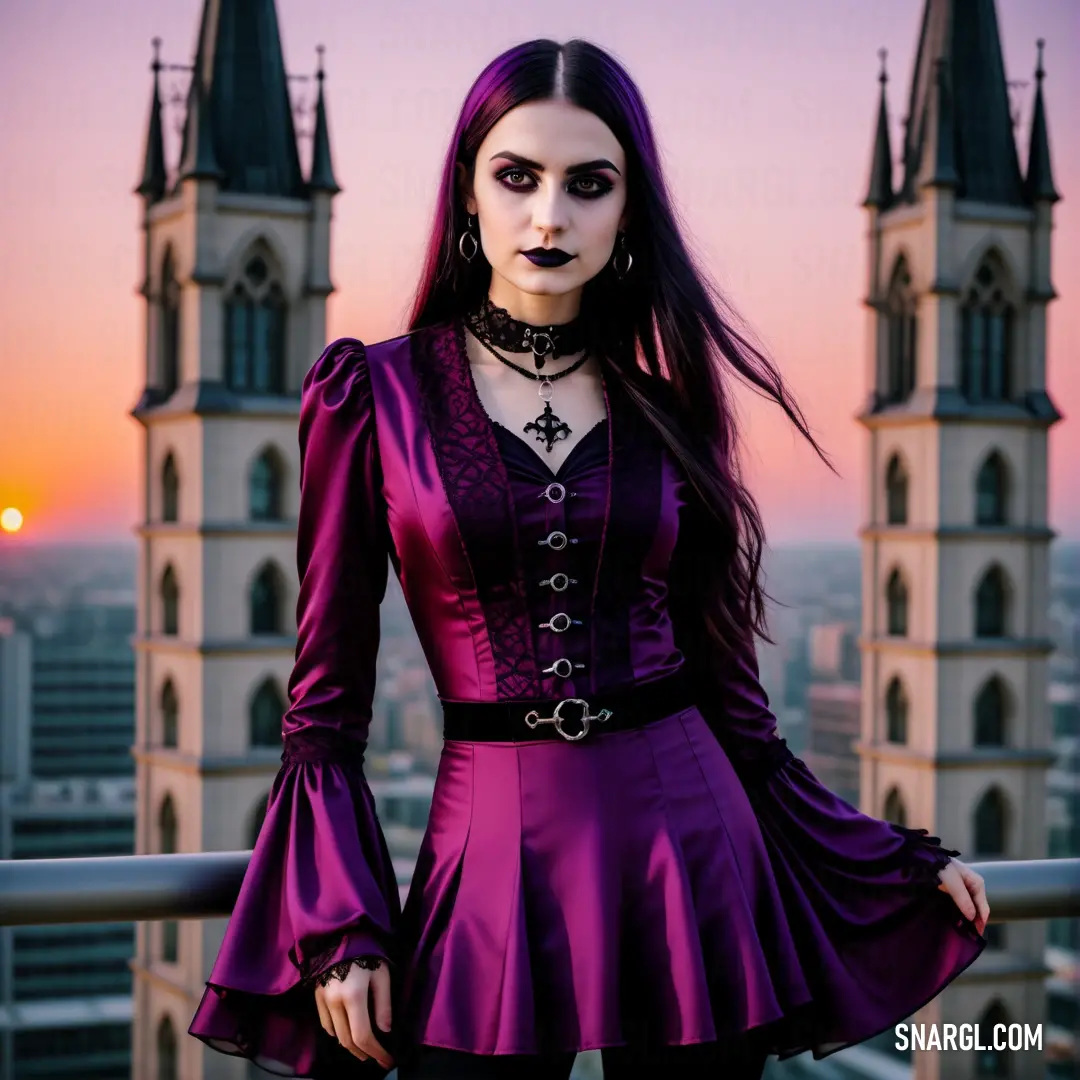
See these colors in NCS, PANTONE, RAL palettes...
What are the future or potential trends or directions in Gothic Style?
Some of the future or potential trends or directions in Gothic style are:
Eco-goth: This trend combines Gothic style with environmental awareness and sustainability. Eco-goths use natural or recycled materials, such as organic cotton, hemp, bamboo, or leather alternatives, to create their outfits. They also avoid animal products, such as fur, feathers, or bones, and opt for cruelty-free cosmetics. Eco-goths may incorporate elements of nature, such as plants, flowers, or insects, into their accessories or makeup.
Neo-goth: This trend blends Gothic style with futuristic and sci-fi elements. Neo-goths use technology, such as LED lights, holograms, or cybernetics, to enhance their appearance. They also experiment with unconventional fabrics, such as latex, vinyl, or metallics, and bold colors, such as neon, silver, or holographic. Neo-goths may draw inspiration from cyberpunk, steampunk, or biopunk genres.
Glam-goth: This trend mixes Gothic style with glamour and elegance. Glam-goths wear sophisticated and refined outfits, such as suits, dresses, or gowns, in dark or rich colors. They also accessorize with luxurious items, such as pearls, diamonds, or velvet. Glam-goths may use makeup to create dramatic or dramatic looks, such as smokey eyes, red lips, or glitter.
Ethnic-goth: This trend incorporates Gothic style with cultural and ethnic influences. Ethnic-goths use traditional or ethnic clothing, such as kimonos, saris, or kilts, in dark or muted colors. They also adorn themselves with cultural or ethnic jewelry, such as amulets, talismans, or beads. Ethnic-goths may use makeup to create exotic or mysterious looks, such as henna tattoos, kohl eyeliner, or bindis.
Pastel-goth: This trend contrasts Gothic style with soft and cute elements. Pastel-goths wear light and pastel colors, such as pink, lavender, or mint. They also decorate themselves with cute items, such as bows, ribbons, or plushies. Pastel-goths may use makeup to create sweet or whimsical looks, such as candy-colored hair extensions, heart-shaped blush, or unicorn horns.
Example of the color palette for the image of Gothic Style

See these colors in NCS, PANTONE, RAL palettes...
What are the best examples or role models of Gothic Style in media or culture?
Some of the best examples or role models of Gothic style are:
Gothic literature: This is a genre of fiction that combines romance and dark elements to produce mystery, suspense, terror, horror and the supernatural.
Some of the most famous Gothic writers are Edgar Allan Poe, Mary Shelley, Bram Stoker, Anne Rice, and Stephen King.
Their works often feature Gothic themes such as haunted castles, vampires, werewolves, ghosts, curses, madness, and death.
Gothic literature has inspired many adaptations in film, television, comics, and video games.Gothic music: This is a broad term that encompasses various styles of music that emerged from the Gothic subculture in the late 1970s and early 1980s.
Some of the main genres are Gothic rock, death rock, cold wave, dark wave, and ethereal wave.
Gothic music is characterized by dark, melancholic, and sometimes aggressive sounds and lyrics that reflect Gothic aesthetics and sensibilities.
Some of the most influential Gothic bands are Bauhaus, Siouxsie and the Banshees, The Cure, Joy Division, The Sisters of Mercy, Fields of the Nephilim, and The Mission.
Gothic music has also influenced other genres such as metal, industrial, synth-pop, and alternative rock.Gothic fashion: This is a style of clothing and accessories that expresses Gothic identity and culture.
Common elements include black leather and PVC, fishnets, crimped spiky hair, black lace, mohair jumpers, brothel creepers, winklepicker shoes and more.
Over the years, goth fashion has taken elements from Edwardian and Victorian clothing, steam punk, cyperpunk, rave, fetish wear, cosplay and more.
Goth fashion is often seen as a form of self-expression and artistic creativity that challenges mainstream norms and conventions.
Some of the most iconic goth fashion icons are Siouxsie Sioux, Robert Smith, Peter Murphy, Patricia Morrison, Rozz Williams, and Morticia Addams.Gothic art: This is a style of art that emerged in medieval Europe in the 12th century and lasted until the 16th century.
Gothic art is characterized by the use of pointed arches, ribbed vaults, flying buttresses, stained glass windows, intricate sculptures, and rich colors.
It reflects the religious and social changes that occurred in Europe during the Middle Ages.
Gothic art also shows a fascination with the supernatural and the macabre.
Some of the most famous examples of Gothic art are Notre Dame Cathedral in Paris, Chartres Cathedral, The Book of Kells, The Isenheim Altarpiece, and The Dance of Death.
Example of the color palette for the image of Gothic Style

See these colors in NCS, PANTONE, RAL palettes...










 Medium jungle green
Medium jungle green Teal green
Teal green Tiffany Blue
Tiffany Blue Black
Black Jungle green
Jungle green



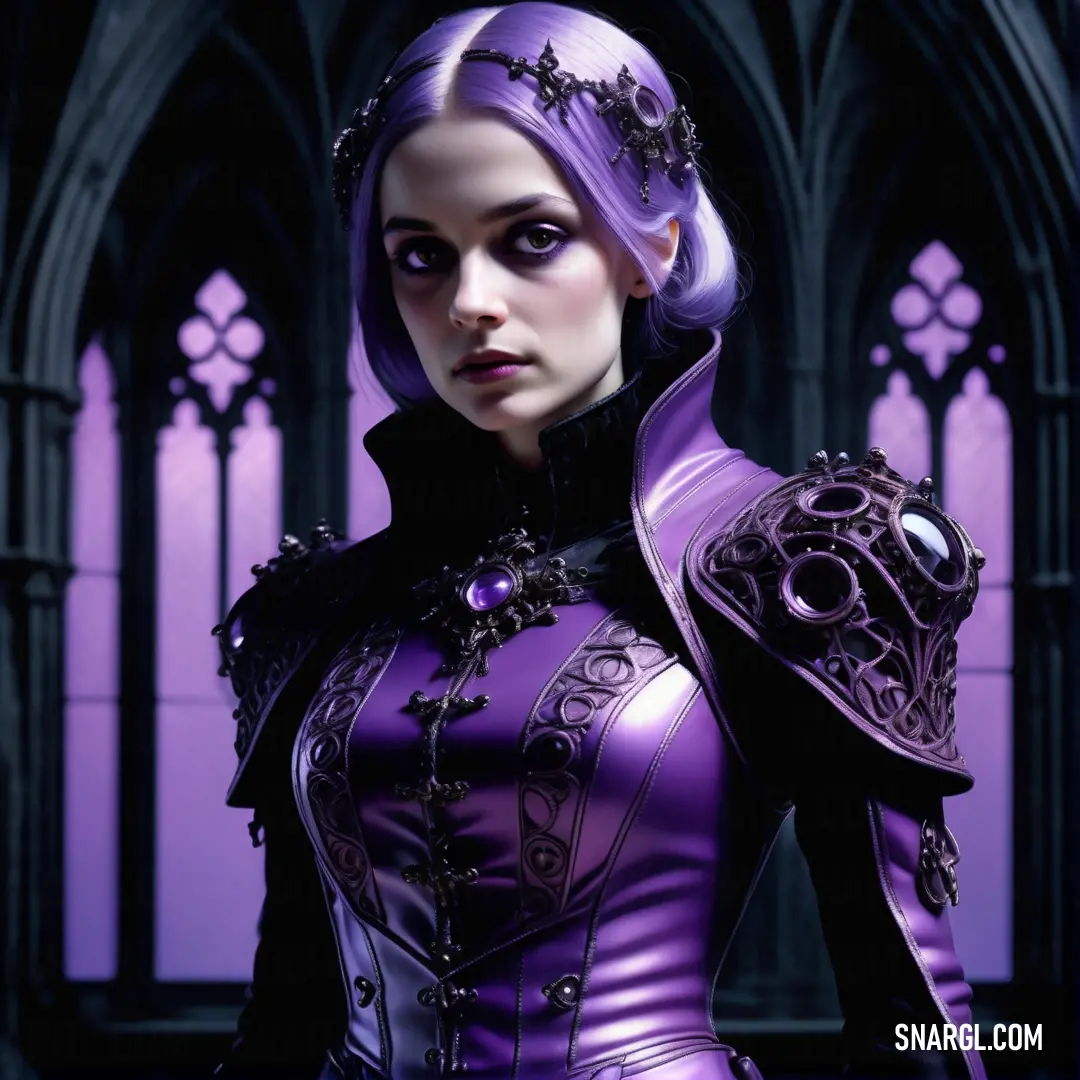
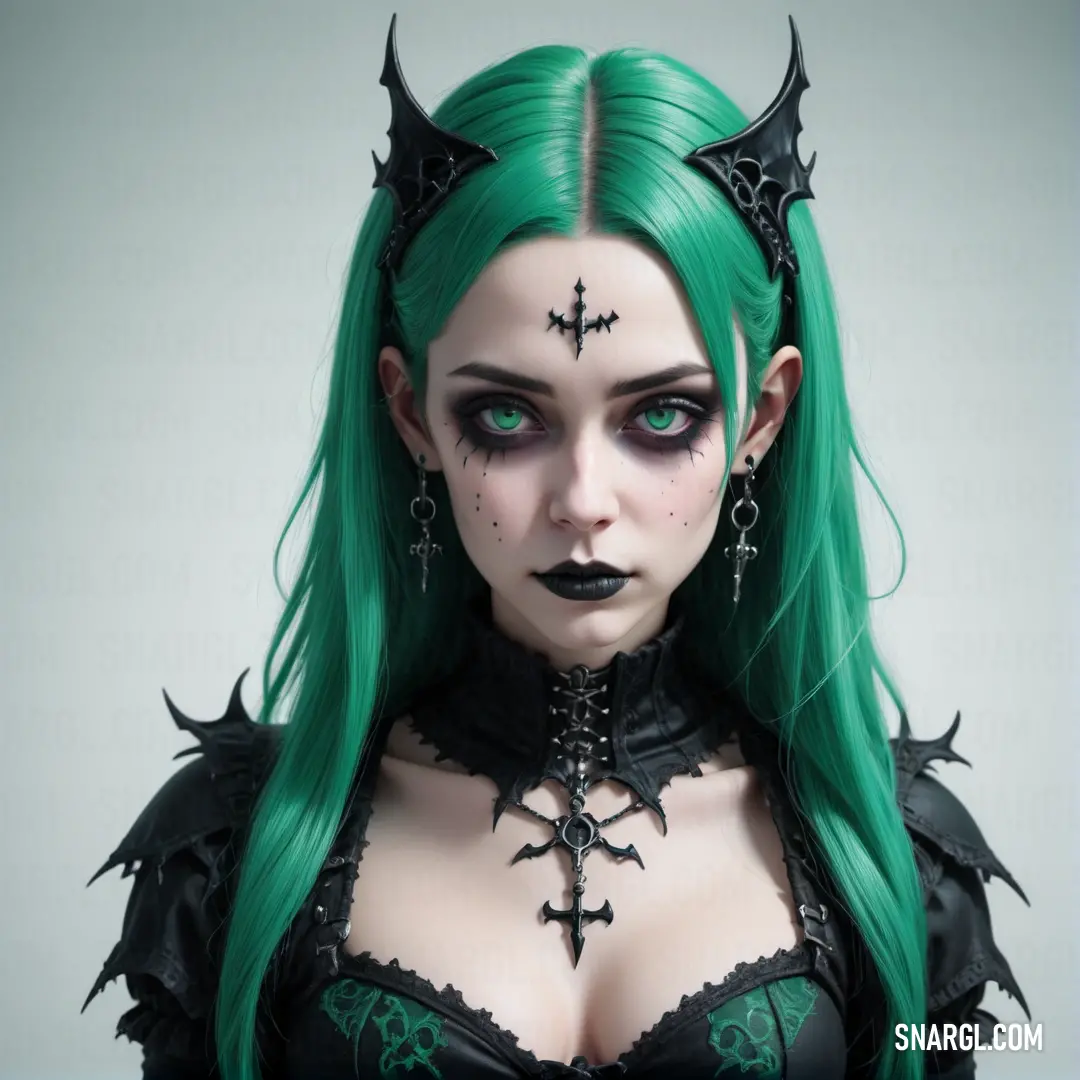


 Dark spring green
Dark spring green Smoky black
Smoky black Pastel brown
Pastel brown Medium aquamarine
Medium aquamarine Jade
Jade

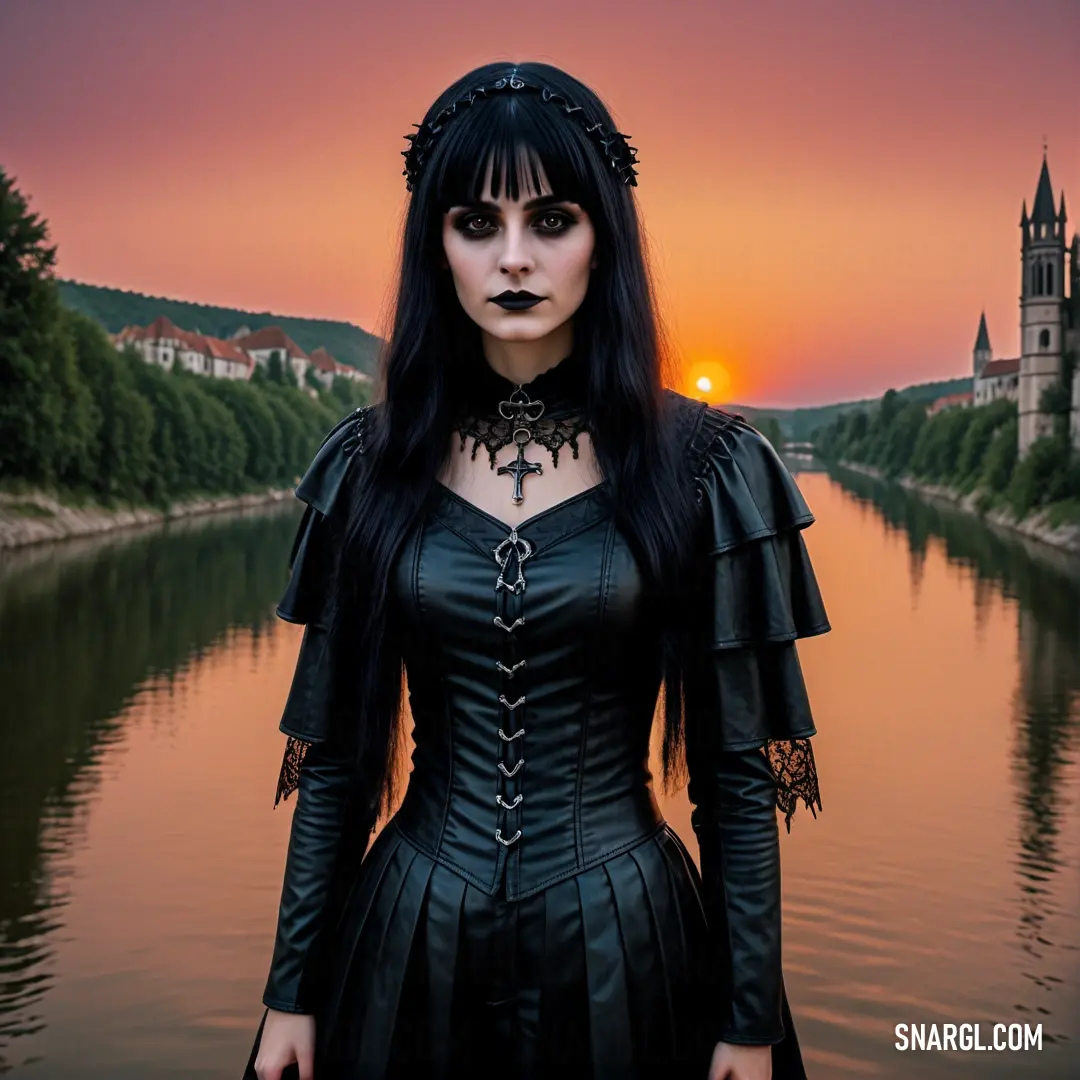


 Dark pastel blue
Dark pastel blue Rose ebony
Rose ebony Bazaar
Bazaar Midnight Blue
Midnight Blue




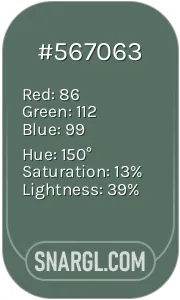 Dark tea green
Dark tea green Ash grey
Ash grey Light slate gray
Light slate gray Oxford Blue
Oxford Blue
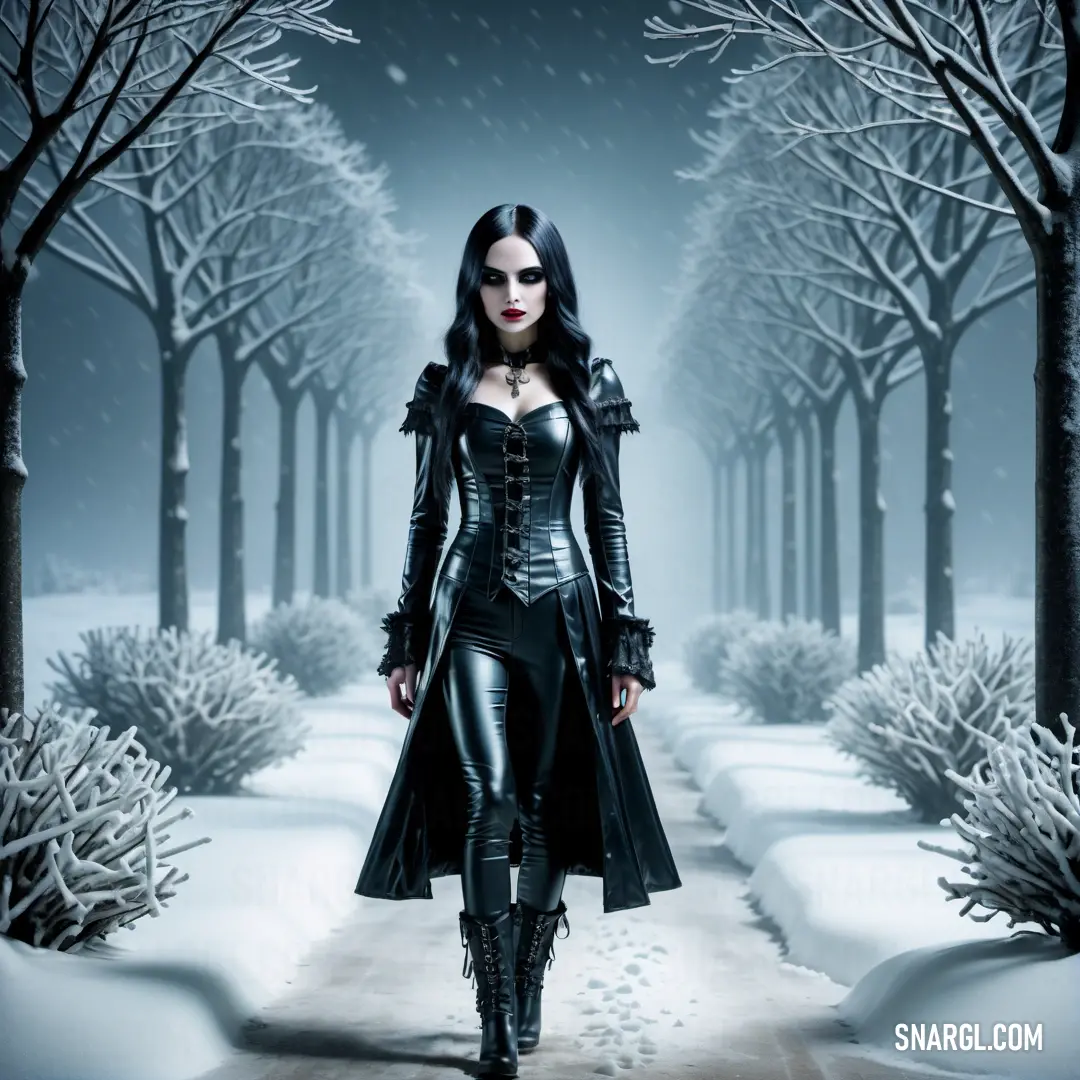


 Onyx
Onyx Hooker green
Hooker green Bone
Bone Sacramento State green
Sacramento State green Pastel purple
Pastel purple










 Camouflage green
Camouflage green Outer Space
Outer Space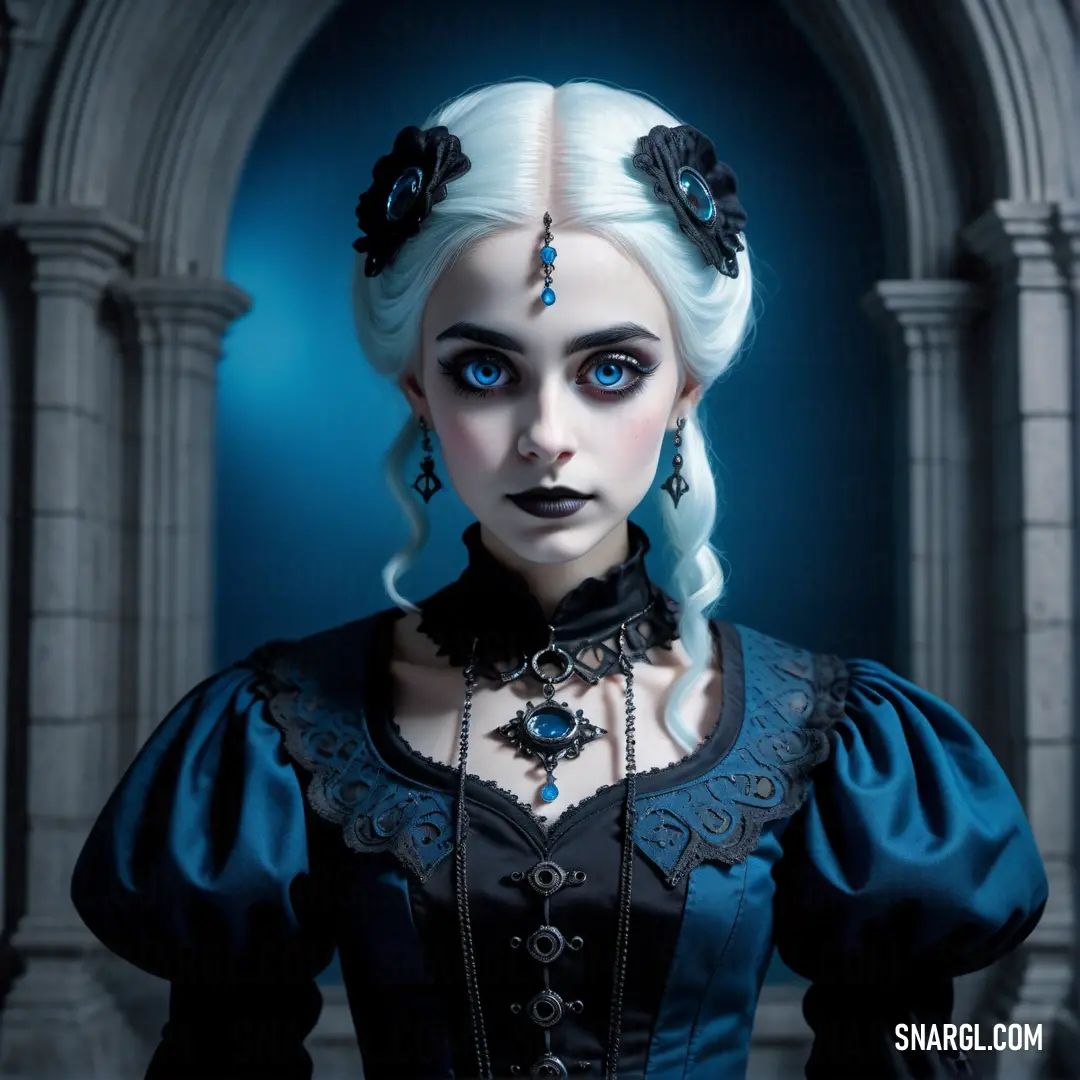






 Medium taupe
Medium taupe Gray-Tea Green
Gray-Tea Green Cadet
Cadet





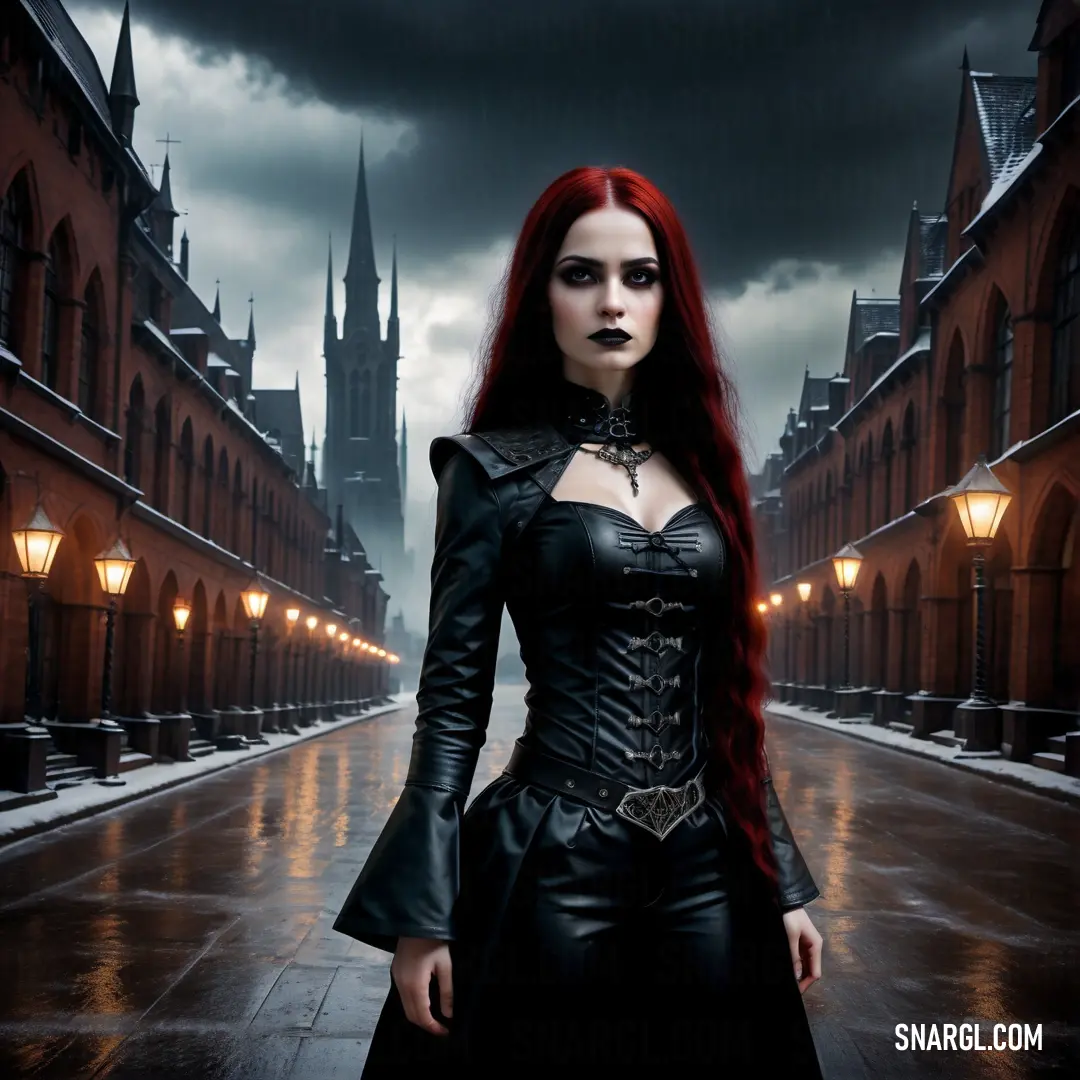

 Prussian blue
Prussian blue Dark brown
Dark brown Beaver
Beaver



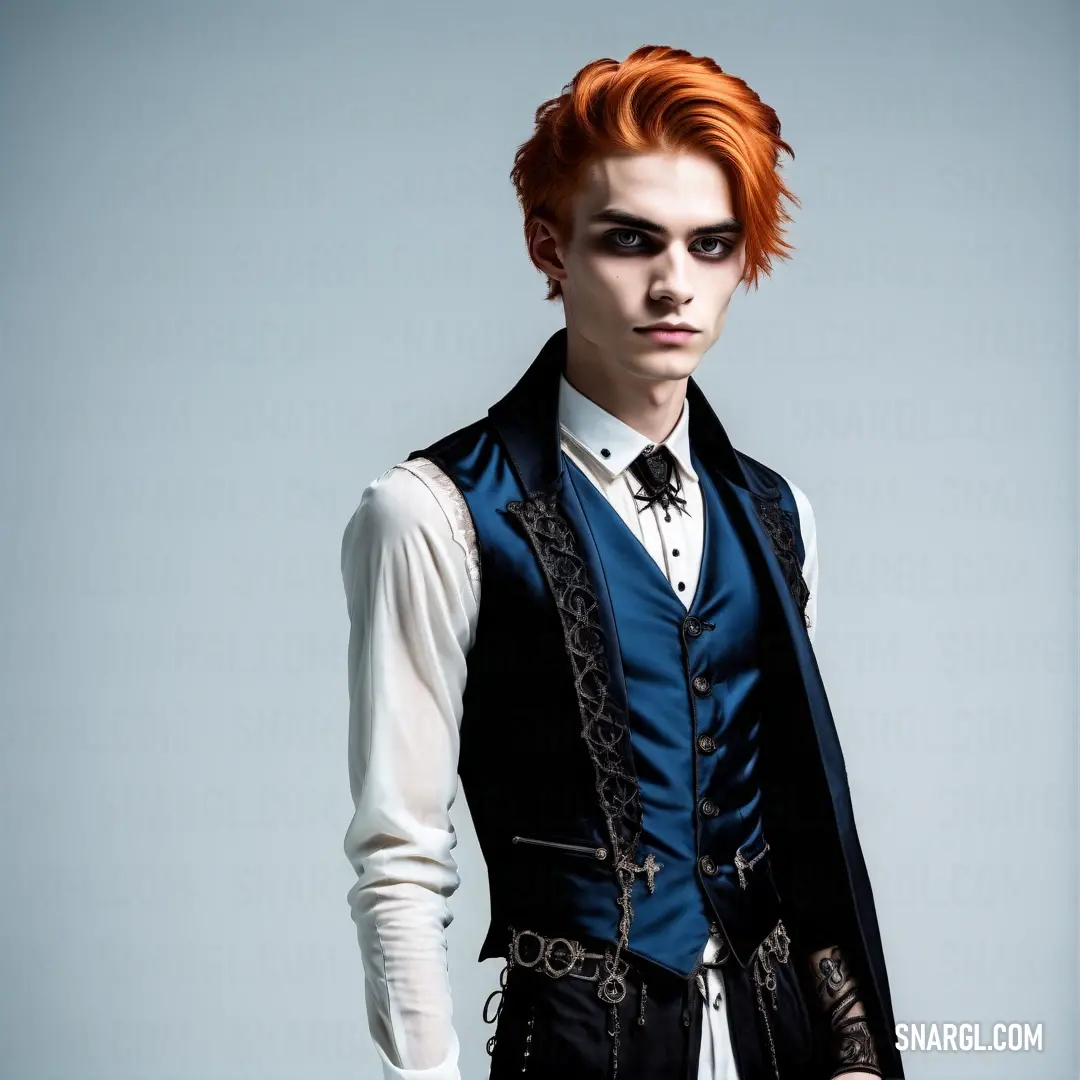

 Pale silver
Pale silver Medium turquoise
Medium turquoise

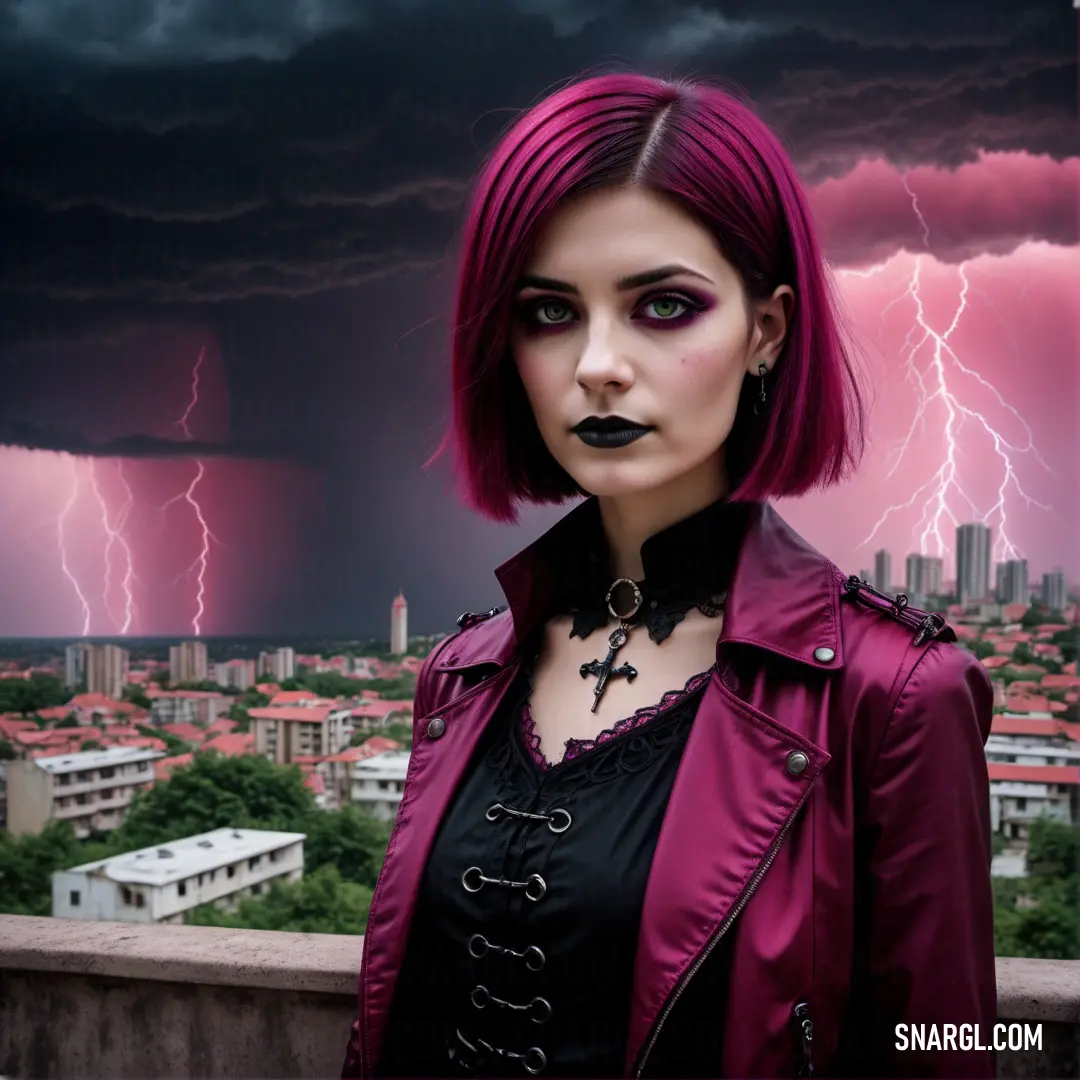




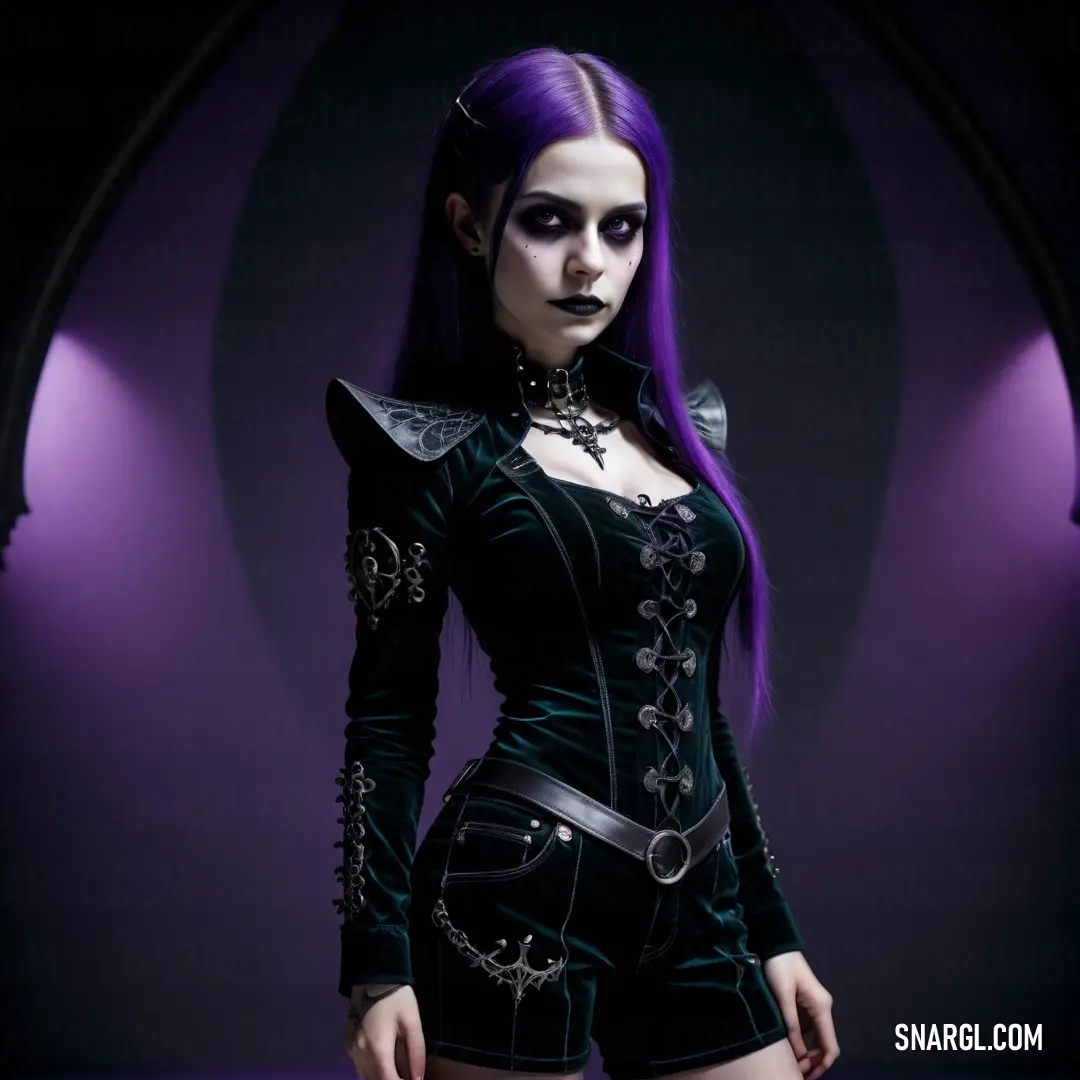


 Dark sienna
Dark sienna Pale chestnut
Pale chestnut Dim gray
Dim gray





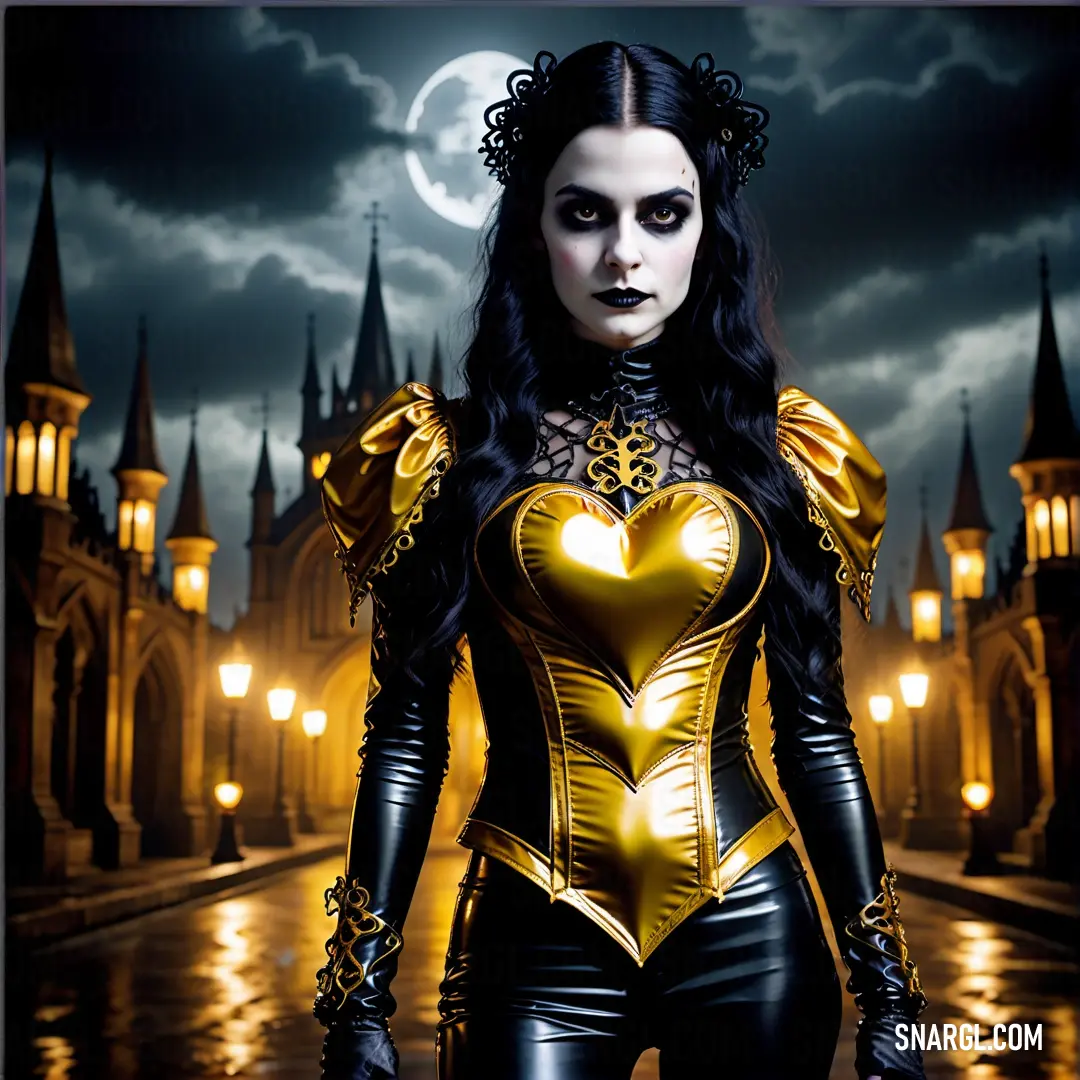

 Charcoal
Charcoal Manatee
Manatee Dark tan
Dark tan Tumbleweed
Tumbleweed
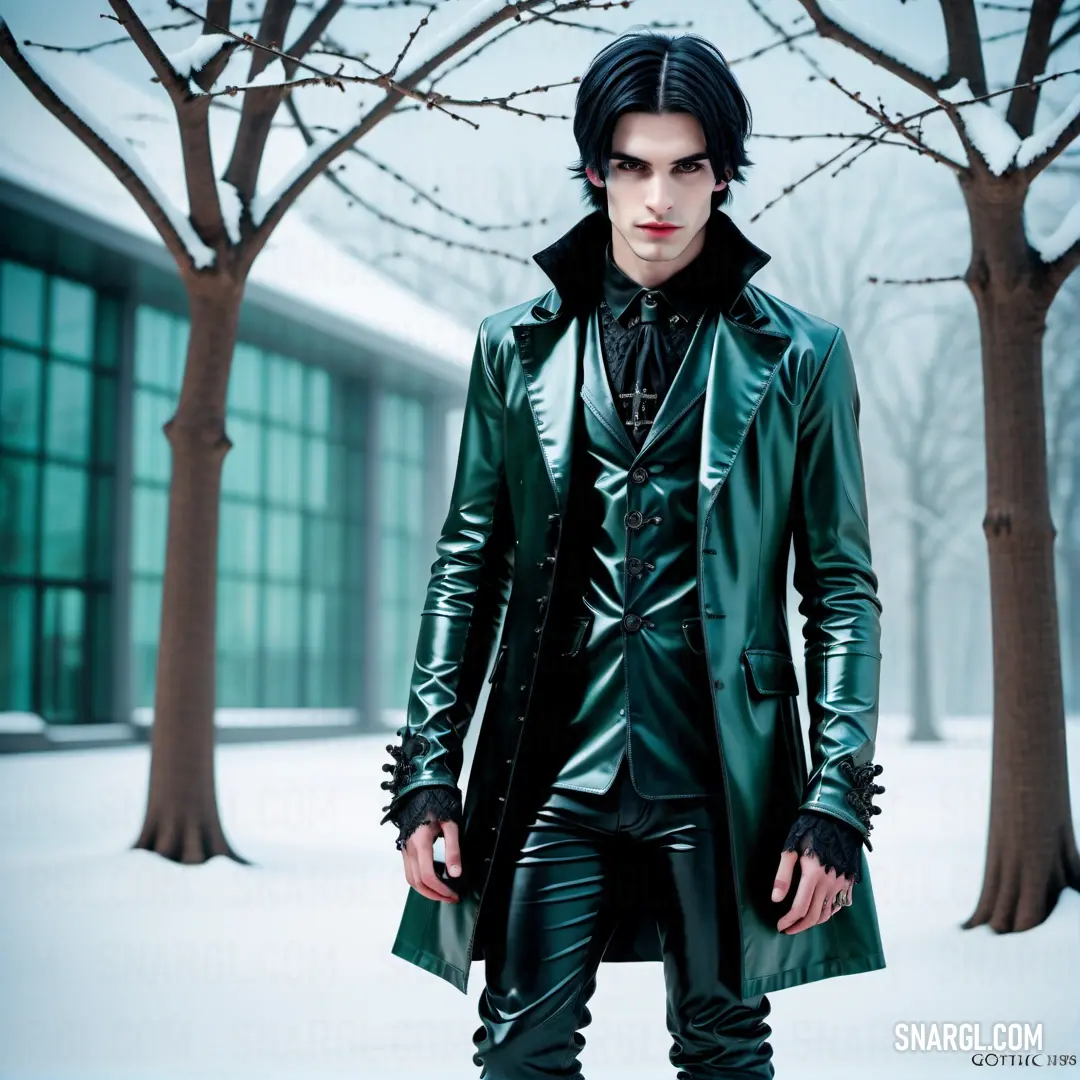



 Tangerine
Tangerine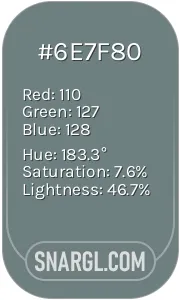 AuroMetalSaurus
AuroMetalSaurus Rufous
Rufous



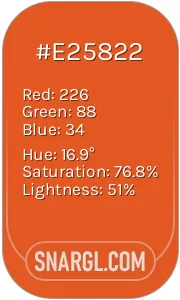 Flame
Flame Liver
Liver Sandy brown
Sandy brown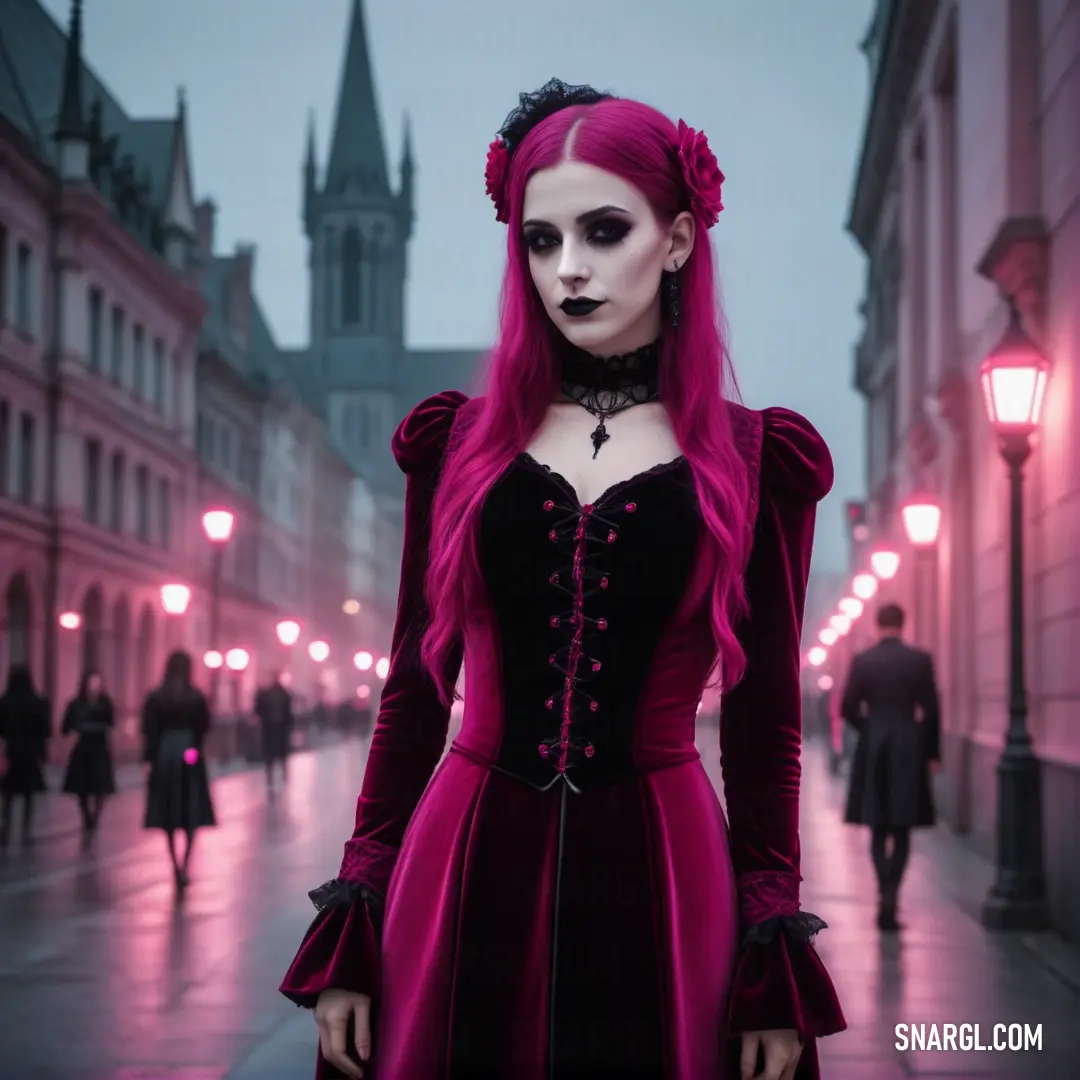






 Battleship Grey
Battleship Grey Pastel gray
Pastel gray Falu red
Falu red




 Dark jungle green
Dark jungle green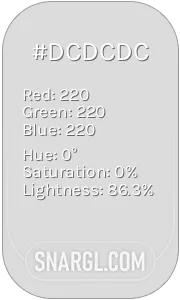 Gainsboro
Gainsboro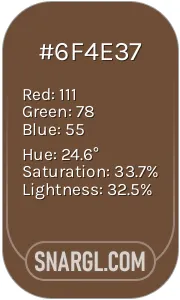 Coffee
Coffee


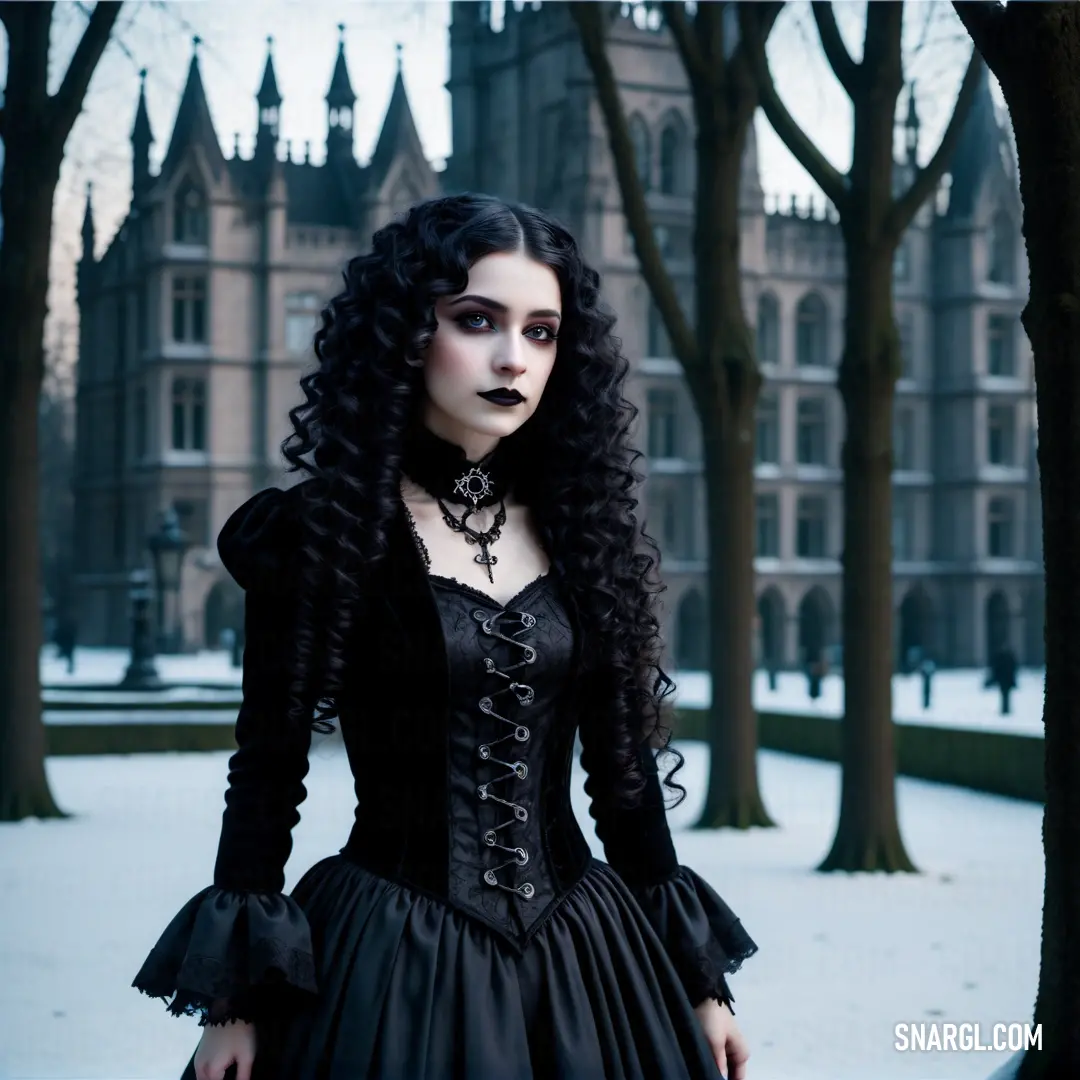







 Canonical aubergine
Canonical aubergine Baby pink
Baby pink Fandango
Fandango


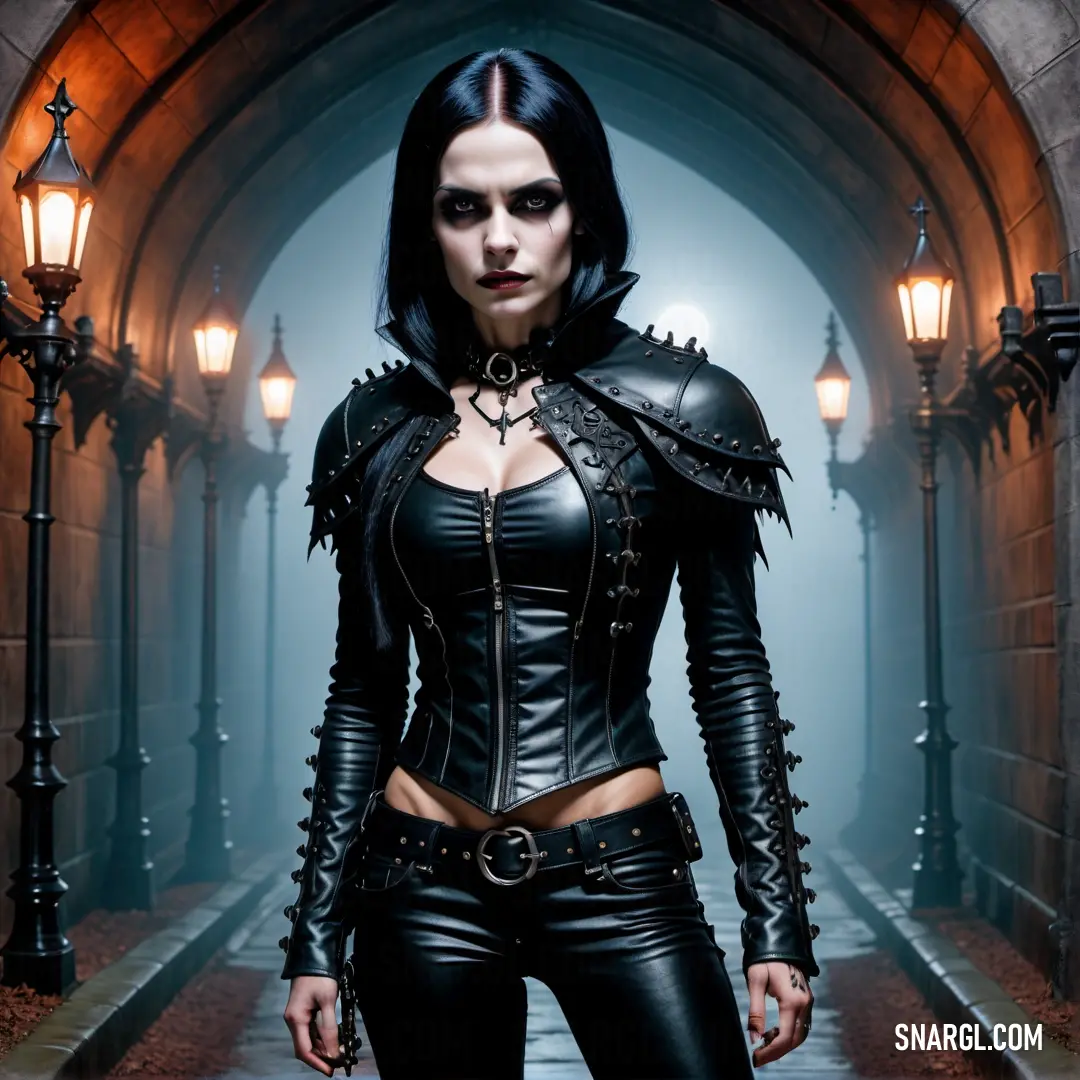



 Pang
Pang











 Rosewood
Rosewood Light gray
Light gray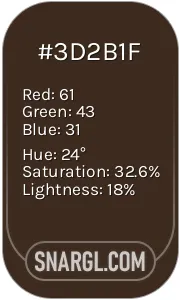 Bistre
Bistre







